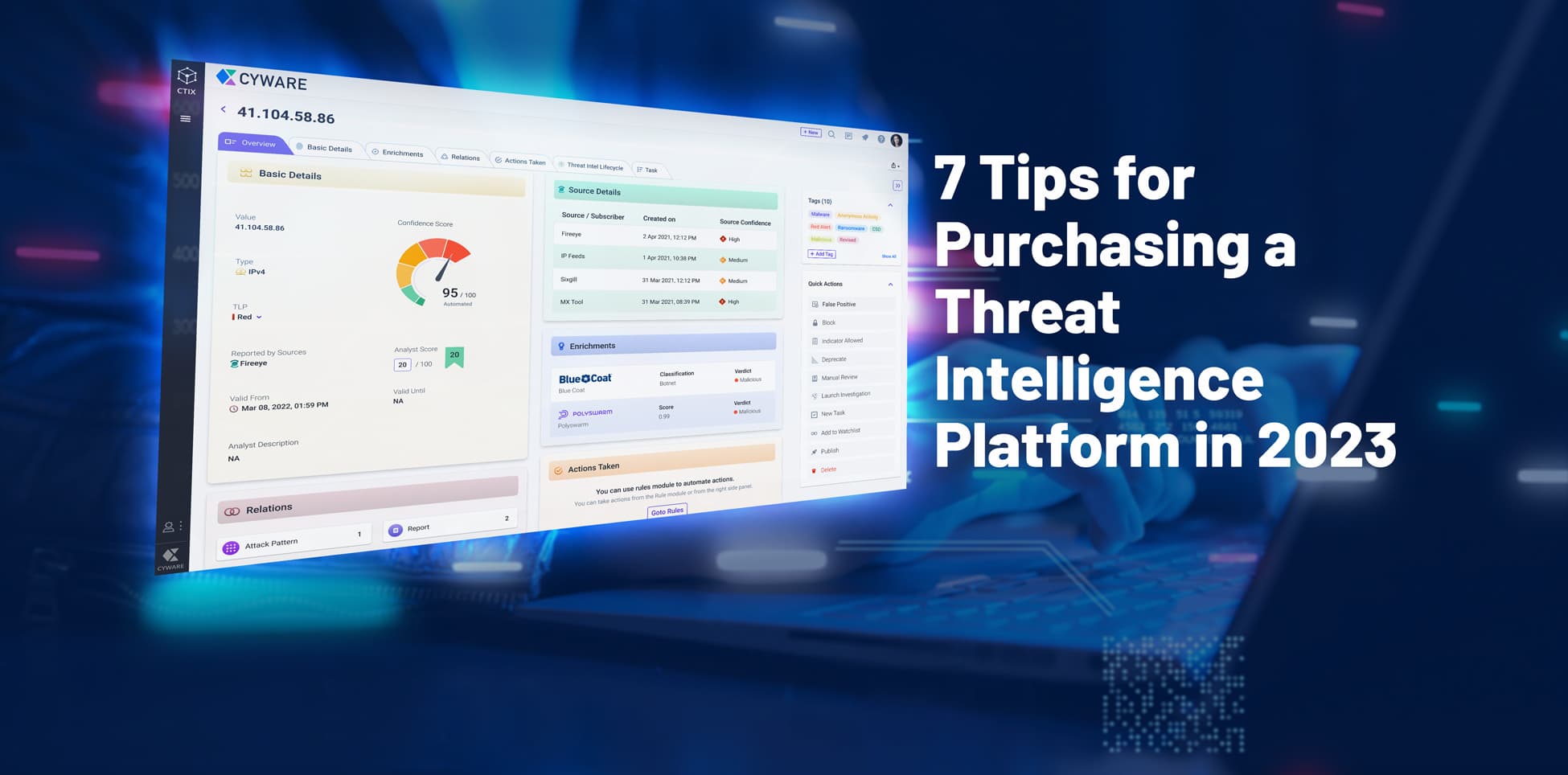
While many organizations rely on threat intelligence platforms to gain a more well-rounded understanding of the threat landscape, they face challenges when it comes to leveraging those same platforms for effective cyber defense. If your threat intelligence platform doesn’t make your threat intelligence and cyber defense programs more effective, they are falling short of potential. It’s important to understand that a threat intelligence platform is capable of more than just ingesting and blocking threat indicators. If your threat intelligence platform doesn’t allow you to operationalize threat intelligence perhaps you should reevaluate your investment in the tool. This blog focuses on the key factors to consider when evaluating an existing or new threat intelligence deployment.
Tip 1. Automate Ingestion
Threat data is generated from multiple sources (internal and external) as well as in different formats (structured and unstructured). Invest in a threat intelligence platform that can automate ingestion from external and internal sources in a format-agnostic manner, such as threat intel providers, ISACs/ISAOs, regulatory bodies, CERTs, SIEMs, Firewall, UEBA, IDS/IPS, Antivirus, etc. More threat data, when available and consumable, is necessary for correlation and deducing high-confidence threat intel.
Whether it’s IOCs in structured formats, such as STIX 1.x, STIX 2.x, MAEC, XML, CSV, YARA, OpenIOC, JSON, PDF, CybOX, etc., or unstructured data ingested from emails, RSS feeds, Twitter feeds, web scrapers, documents, blogs, etc., the best-of-breed threat intelligence platform automates ingestion of data in every form for centralized analysis, threat visibility, and proactive mitigation.
Tip 2. Normalize Threat Data
All the structured and unstructured threat data ingested from disparate sources needs to be normalized to a common standard before it is analyzed, actioned, or shared further. One of the popular formats used to normalize threat data is STIX which enables security teams to deduplicate the data and make it more meaningful for threat identification, prioritization, and containment. Expend your time and money on a threat intelligence platform that can convert and normalize unstructured threat data into a standardized format.
Tip 3. Ensure Comprehensive Threat Intel Enrichment and Correlation
The true value of threat intelligence lies in processing it by enriching and correlating threat data, making it more contextualized and actionable. Lay your hands on a threat intelligence management system that is integrated with trusted threat databases, such as VirusTotal, Mandiant, Shodan, Phishtank, AlienVault, PolySwarm, etc. for better enrichment and correlation, and can help you act upon threat intelligence and operationalize it at scale.
Tip 4. Score Threat Intel. Eliminate False Positives.
It’s important to eliminate false positives and have noise-free threat intelligence. One of the most imperative ways to get rid of false positives is by calculating the confidence score of IOCs. A threat intelligence platform with a confidence scoring engine helps deduce high-confidence threat intelligence, significantly reduces false positives, and aids in the prioritization of threat intelligence, thereby operationalizing threat intelligence and expediting threat management actioning.
Tip 5. Take Automated Actions
A critical component of operationalizing threat intelligence is to drive automated actioning that tunes existing security tools, such as SIEM, EDR, Firewalls, IPS/IDS, etc. Tight integration with orchestration functionality is fundamental to ensuring this capability can operate without continuous administrative intervention and tuning. This may be the most unique advantage of Cyware’s comprehensive Threat Intelligence Management System well explained in this solution overview.
Tip 6. Simplify Sharing to Expedite Collective Analysis
If you are looking to expedite threat intelligence distribution, you need a threat intelligence platform that helps automate the bidirectional sharing of threat intel across your trusted sharing community. Real-time threat intel dissemination will help the community members anticipate, prevent, and respond to threats at the earliest.
**Tip 7. Share Broadly **
The risk profiles are different for every organization, be it a large enterprise, a government entity, or a managed security service provider (MSSP). However, the ability to collaborate provides teams across organizations with the ability to share the who, what, when, and how of the threat in real time, allowing them to prioritize and focus on proactively mitigating the greatest risks to their organization.
Buying a threat intelligence platform that facilitates sharing and collaboration between every stakeholder in and outside an organization is the key to enabling collective defense, thereby accelerating threat detection and response.
Choose the Best. Deploy Cyware’s Threat Intelligence Management System!
Cyware provides a next-generation threat intelligence management system that comprises Intel Exchange (CTIX) and Collaborate (CSAP) to accelerate and enhance security collaboration. While Intel Exchange (CTIX) is an automated threat intelligence platform for ingestion, enrichment, analysis, prioritization, dissemination, actioning, and bidirectional sharing of threat data, Collaborate (CSAP) is a bidirectional alert and advisory sharing platform purpose-built to boost security and situational awareness, and build collaboration across an organization or threat-sharing community.
If you’re interested in learning more about Cyware’s threat intelligence management system, schedule a free demo with us.
About the Author

